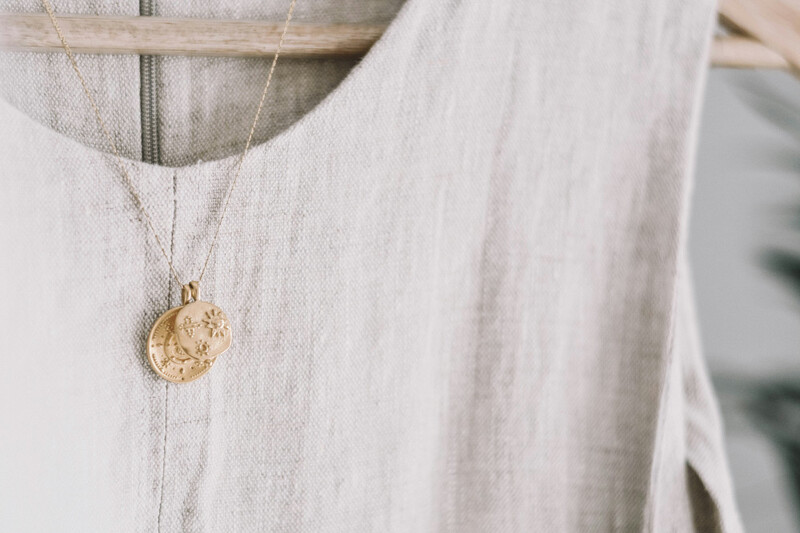So what exactly makes this particular textile so special?
In 2003, Dr Heidi Yellen conducted a study on the vibrational frequencies of fabrics. These frequencies were measured in angstroms (m), using a digital Ag-Environ machine. This device was originally designed to identify the distinctive vibration signatures of agricultural products, to help farmers determine the ideal times to plant and harvest their crops. Her study suggests that the fibers in our clothing can influence our well-being and ability to heal.
Everything in our world, from the air we breathe, to the food we eat, to our own individual bodies, is comprised of atoms that vibrate at various rates of speed. These vibrational frequencies often lie beyond the scope of human perception, yet can be measured and scientifically verified. Grounded in bioenergetics, (a field in biochemestry and cell biology concerning energy flow through living systems), Dr Yellen's study reveals that every type of fabric vibrates at its own unique frequency. According to the digital device readouts, the human body has a frequency range between 70-100m (and can drop below 50m in persons with chronic disease). Dr Yellen's theory is that any cloth with a frequency rate higher than our body rate adds remedial energy to our system, while lower frequency materials (those below our body rate) have a draining effect that can provoke illness.
The Frequencies Of Fabric
- Linen & Wool - 5000
Wowza, that's a lot of boosting power! But please take note: when these two high-vibe fabrics (linen and wool) are worn together, the frequencies cancel each other out and fall to zero. In Yellen's study, wearing a wool sweater over top a linen outfit collapsed the electrical field. This anomaly could be due to the energy field of wool flowing from left to right, while that of linen flows in the opposite direction, right to left. In other words, combining these natural fibers, produces opposing polarities that not only negate their amazing benefits, but can deplete our systems, causing discomfort, fatigue and weakness. - Organic Cotton - 100
Organic cotton, made from pesticide-free cotton plants, is in sync with our bodies and can be beneficial when we're sick or feeling run down. It's important to remember that not all cottons are equivalent. 100% cotton comes in at a rate of 70 and standard bleached cotton measures at a mere 40. - Rayon - 15
Rayon, which is milled utilizing mulched natural fibers and chemicals, measures in thedead-frequency
zone. Meaning that this low-vibe fabric is equivalent with the body vibration rate of someone who is extremely sick and dying. - Silk - 10
Traditionally, silk was produced naturally, suggesting that raw silk may have a higher score. However, using modern manufacturing methods, the frequency level of silk today is dismal and counterproductive to our health. - Synthetics - A big fat 0
These so-called fabrics are devoid of benefits. When we wear synthetic clothing such as polyester, nylon and acrylic, we are essentially wearing plastic. When washed, these petroleum-based substances have been shown to shed into microplastics. I touched on this a bit in a previous post last month. Since our skin is our largest organ, these microplastics can get sucked right into our bodies, which needless to say, adversely affects our health and wellness. With a frequency of zero, these types of artifical materials do a number on our biological systems. We would be wise to begin swapping them out for other, more organic alternatives.
So far, I've just been spotlighting clothing, but if we take a look around our homes, there are textiles everywhere - our curtains, bedding, chairs, couches, pillows, towels and more. I wonder what kind of frequencies they are emitting. 🤔 I know, I know, I've fallen down a rabbit hole and there seems to be no bottom! But in this day and age, and for the sake of our well-being, we need to be aware of these things.
Expanding On The Many Qualities Of Linen
- Because linen is so durable, products made from it have been known to last for decades.
- It becomes softer after each washing.
- The silica content in flax fibers, means no pilling or degrading.
- It is breathable with a cooling effect on the skin.
- It offers natural sun protection.
- It is resistant to harmful radiation.
- It is both antibacterial and hypoallergenic.
- It is hygroscopic - swiftly absorbs and releases moisture.
- It has been shown to significantly enhance the body's energy field.
- It never accumulates static electricity.
- It has a calming effect.
- Linen sheets help us sleep quicker and deeper and awaken feeling refreshed.
- Linen stimulates blood flow.
- It helps activate the body's innate healing abilities.
- Linen is easy to clean, but requires gentle treatment - low-temp washing and drying.
Heeding my own advice, the other day I splurged on a 4-piece linen sheet set, which arrived in the mail this afternoon. WooHoo! I can hardly wait to crawl into bed tonight and envelop myself within the nurturing embrace of pure linen! 😴
